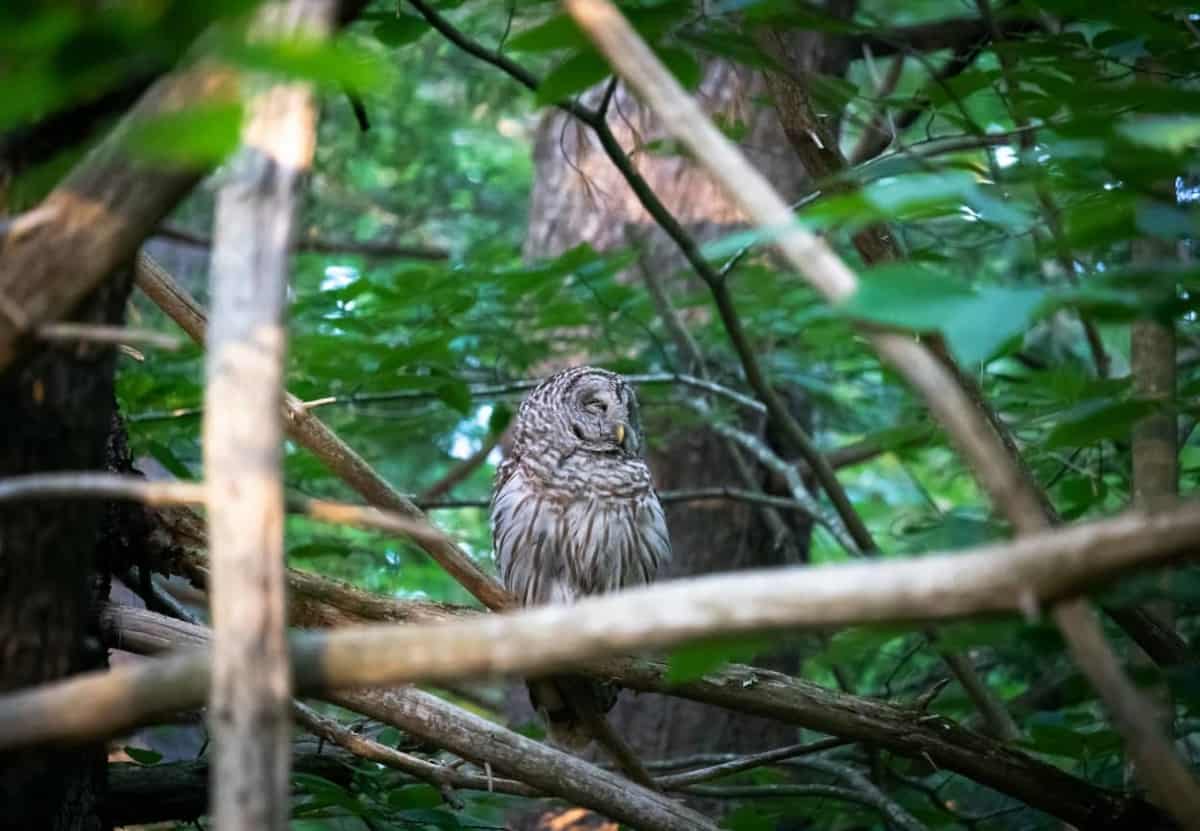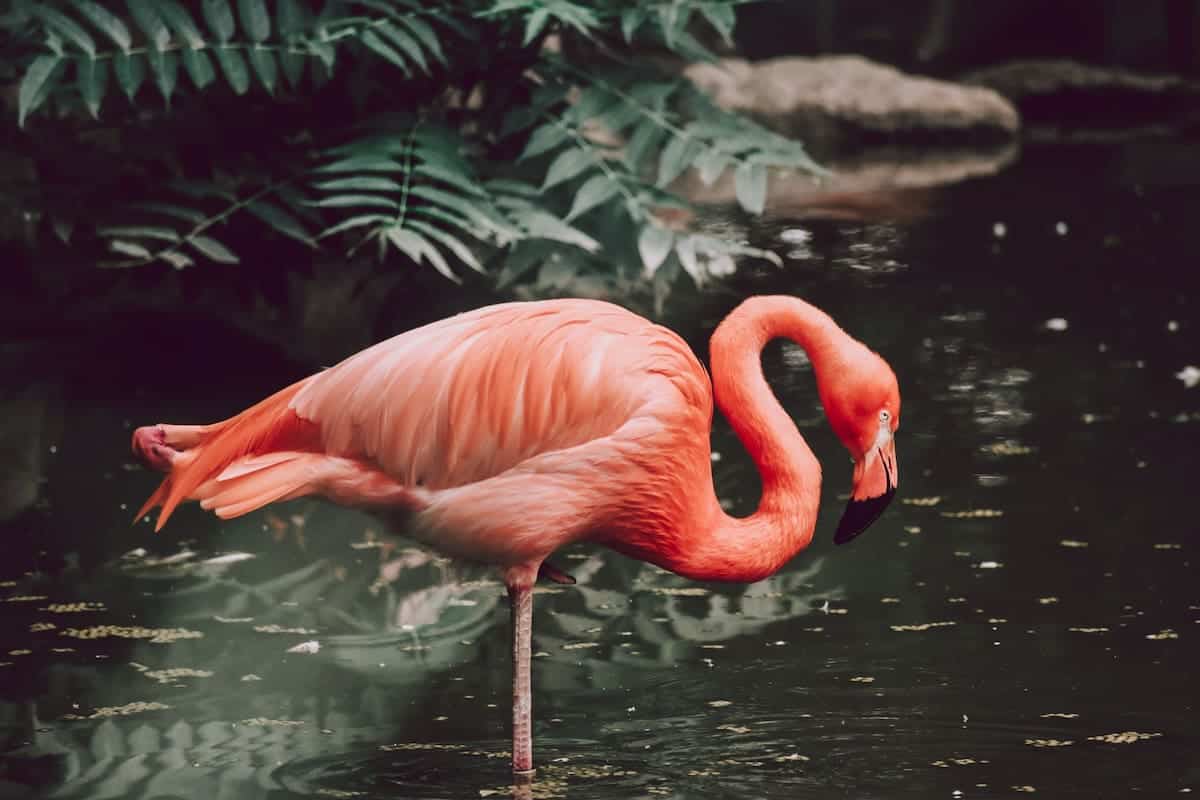Most people know that owls are typically nocturnal. They sleep during the day and hunt at night. What you may not know is how they sleep.
Owls have different features compared to other species of birds. Their eyes do not move, they can turn their heads 270 degrees, and they have heavy heads that are difficult for baby owls to support.
Due to these unique features, owls have unique sleep habits.
Owls sleep in an upright position with their eyes closed. They typically sleep on tree branches or in tree cavities that help shield them from sight during the day. They do not usually tuck their beaks into their feathers for warmth or stand on one leg.
Owls have interesting sleeping patterns compared to other birds. The following guide takes a closer look at how owls sleep.
Owls Sleep Upright on Branches
Owls sleep upright on tree branches, the ledges of buildings, and other structures that can support their weight. They may also stand in a tree cavity or a fracture in cliffs.
Most owls sleep standing but never fall. When an owl lands on a tree branch to sleep, it puts more weight on its heels.
The weight tightens a tendon located in the heels, which forces the toes to close in a tight grip around the tree branch. The feet remain locked in place throughout the day.
Owls keep both legs on the perch. Other species of birds often lift one leg to keep it warm. However, the legs of an owl are covered in feathers.
Not all owls sleep during the day. There are about 250 species of owls. At least two owl species are diurnal. The northern pygmy owl and the northern hawk owl sleep at night and are active during the day.
Owls Sleep with Their Eyes Closed
Owls also sleep with their eyes closed. They have three sets of eyelids. On top of the eye is a translucent eyelid called a “nictitating membrane.” The nictitating membrane helps keep the eyes moist and clean.
An upper set of eyelids is used for blinking. The lower set of eyelids is used for sleeping. When an owl sleeps, the lower eyelids close upward.
Most Owls Sleep Face Forward
Owls typically sleep with their face forward but occasionally turn their heads backward. It is more common for an owl to sleep with its head back when it roosts in a tree cavity. The owl can face into the cavity and turn its head back to peer outside.
Owls do not commonly tuck their head the way that other species of birds do. However, they may occasionally tuck their beak into their chest for warmth on exceptionally cold days.
Baby Owls Sleep Face Down
Baby owls sleep face down because their heads are too heavy. Baby owls are called owlets. The size of their heads keeps them from napping sitting up, so they lie down on their stomachs. They also typically turn their head to one side.
Owlets gradually build the strength needed to remain upright. Within two months, the owlets should be strong enough to support their heads.
Mother owls care for their young owlets throughout most of the year. The baby owls continue to sleep in the nest for up to two months. After they learn to fly, the young owls may start sleeping on tree branches near the nest.
Owls are not good at building nests. They look for nests abandoned by other animals or take a nest from a smaller bird.
The breeding season starts at the end of winter or the start of spring. By the end of spring, the eggs have hatched.
The mother owl does not typically sleep in the nest with her eggs or owlets. She sleeps upright on nearby branches. Young owls may stay with their parents for several months after learning to fly.
The nest may not offer enough space for the baby owls and the mother. However, some of the smaller species of owls may roost with their young owlets.
For example, the northern pygmy owl may roost in the nest hole with the owlets during their first few weeks of life.
Owls Cannot Achieve REM Sleep
Owls cannot move their eyes, as the eyes are fixed in their heads, which keeps them from achieving rapid eye movement (REM) sleep. However, studies show that owls can achieve a type of deep sleep.
Owls and many other birds can sleep with half of their brain awake, which is called unihemispheric slow-wave sleep (USWS). Owls are still half awake, allowing them to detect approaching threats, such as predators.
Owls also control how frequently they rely on USWS. When owls are free of threats, they stay in a deep sleep for longer periods. When sleeping in a risky environment, an owl may keep one-half of its brain awake for longer periods.
Owls are solitary animals. They live and sleep alone. Instead of relying on others to keep an eye out for predators, owls need to remain aware of their own surroundings. They use USWS to remain conscious of predators.
Unlike other species of birds, owls do not sleep with one eye open. Both eyes remain closed during USWS.
While owls mostly sleep alone, they occasionally gather and huddle to stay warm during the wintertime. However, many species of owls can withstand very cold temperatures.
For example, the snowy owl can withstand temperatures down to -40 degrees Fahrenheit. Smaller owls are more susceptible to cold weather. Short-eared owls, long-eared owls, barn owls, and northern saw-whet owls may cuddle to make it through the winter.
Conclusion
Owls sleep during the day on tree branches and other structures. They sleep in an upright position with their feet locked around their perch.
Owls may also tuck their beak down into their chest for warmth. Baby owls lay face down, as their heads are too heavy for them to stay upright during sleep.
These are just a few of the interesting facts about owls. If you are interested in learning more about owls, consider researching their habitats and diet.





